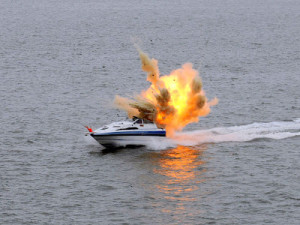A gas suppression system is a highly effective technological solution that works by releasing an odorless, invisible flame retardant into the air to prevent fires from spreading and extinguishing them once they're out.
The fire tetrahedron, or "four-sided pyramid" as it is sometimes called for short contains all the elements needed to sustain combustion. Fuel with an open flame at its center fuels a chain reaction that generates heat and oxidizers like oxygen which then combine in order constitute a firestorm passion this proves how complex fires can be despite their simplicity!
All fires need four key components to be ignited and maintained. By removing any one or more of these, you can extinguish the fire tetrahedron completely - but if it's not under control then always call an expert for help!
- Stopping the chain reaction of combustion
- By removing or containing the fuel source
- By reducing or cutting off the oxygen source
- Extinguish the fire by removing enough heat
A gaseous fire can be suppressed in two ways:
Oxygen Reduction: Inert gases such as argon and nitrogen extinguish fire mainly by diluting the air with a low concentration of oxygen, below 15 volume per cent. When this happens combustion stops because there's not enough fuel for it in order to continue burning at higher temperatures- which is most materials' natural state anyway!
Chemical means: Chemically suppressing fires is a complex process that involves the release of an agent and air to cool down any hot spots. This does not mean, however, there's no risk for those on site when this occurs: fire fighters often have their own risks such as inhaling toxic fumes or getting burned by chemical agents used in battling blazes which can be very dangerous situations if left unmonitored.
The alarm goes off and the control panel is immediately notified. The smoke detectors are designed to alert them of any fires in their immediate area, so they can release a fire-suppressing gas into that location before anything else happens or gets worse for you!
It'll take about 30 minutes but it could save your life if there was already combustion happening at ground level when this happened.
Different types of gas suppression systems
Various factors determine which gas suppression system to use, such as the storage space for cylinders, the installation of pipes, environmental impact, and cost. If you aren't sure which gas is right for you, always consult a professional.
The following are comparisons of the three most common gas agents.
Non-conductive: Unlike traditional fire fighting methods, Gas Suppression Systems do not conduct electricity, making them an excellent choice for extinguishing electrical fires.
Quick Response: A gas suppression system not only puts out a fire quickly, reducing damage from the spark, but also helps minimize damage from smoke and soot released by the fire.
Minimal Damage: A business fire is not just about the damage caused by the fire. Leaving behind water or residue from a traditional fire extinguisher can also cause major damage to items like electronics. A
fire suppression system reduces the amount of clean up needed after the fire has been extinguished, so you'll be back in business much faster.
Protect Employees and Occupants: Fire protection service are designed to work in both occupied and unoccupied rooms since they eliminate the need for evacuation before fire suppression systems are triggered, therefore extinguishing a fire faster, protecting human life.
Eco – Friendly: A system such as the Novec 1230 suppresses gaseous clean agents. It will not negatively affect the ozone layer of the earth.




Comments
Post a Comment